Cologne’s EL-DE Haus stands as a somber reminder of the city’s dark past under Nazi rule. Visitors to this former Gestapo headquarters can now explore a memorial center that delves into the experiences of those who suffered under the Third Reich. Through expert commentary and powerful inscriptions left by prisoners, the three-hour tour offers a profound exploration of the everyday struggles faced by political prisoners, forced laborers, and Jewish citizens. As participants uncover the impact of Allied bombings and the resilience of those who endured, they’re left with a deeper understanding of this complex and harrowing chapter in Cologne’s history.
This experience made our list of the 13 Best Historical Tours In Cologne.
Key Points
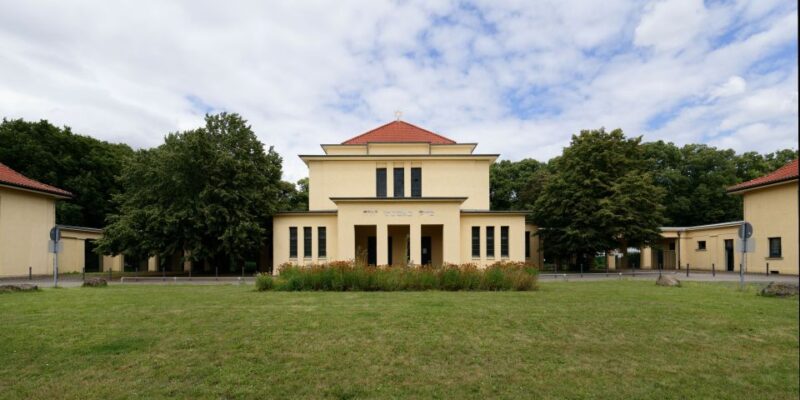
- The Cologne EL-DE Haus tour explores the history of the Nazi regime’s oppression, highlighting the experiences of political prisoners, forced laborers, and Jewish people.
- Visitors can witness the impact of Allied bombings that destroyed 90% of Cologne and trace the inscriptions left by prisoners in the building’s basements.
- The tour provides insights into the everyday life and survival struggles of civilians under Nazi rule, including food shortages, rationing, and the fear of the Gestapo.
- Guests can examine the rise of Hitler’s power and the systematic persecution of minority populations, as well as the significant impact of Allied bombings on Cologne’s infrastructure.
- The guided walking experience offers an immersive and informative exploration of Cologne’s Old Town and the EL-DE Haus, fostering a deeper understanding of this complex historical period.
Tour Overview
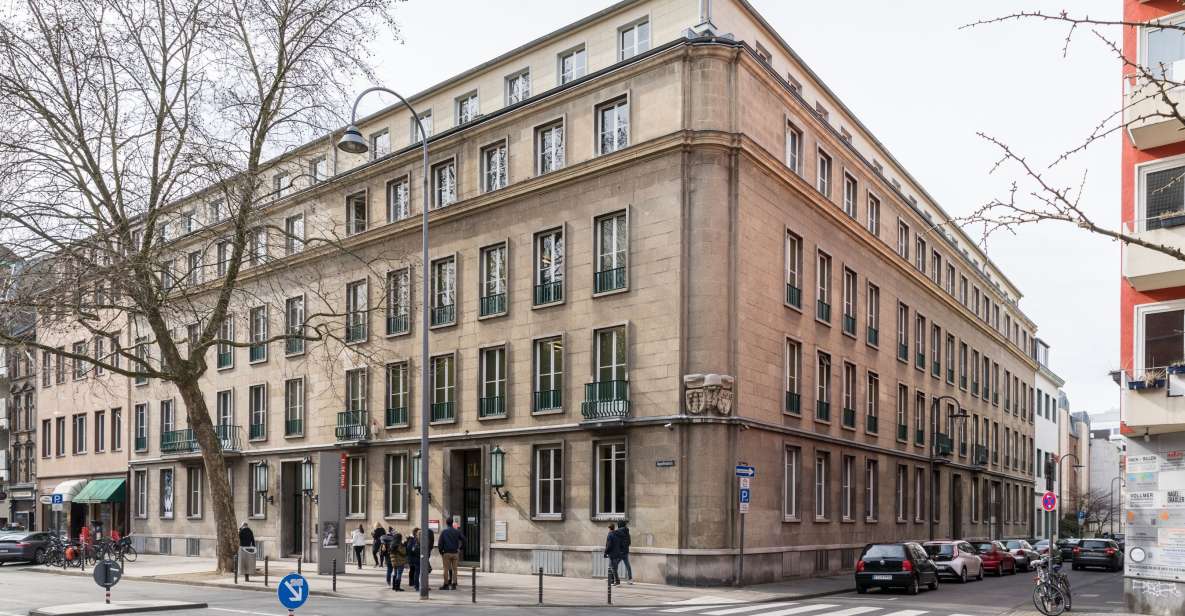
The Cologne EL-DE Haus and WWII Jewish Holocaust History Tour offers a comprehensive 3-hour guided experience, with prices starting from $267.44 per person.
Available in several languages, including German, English, French, Russian, Spanish, and Italian, the tour is conducted in a private group setting.
Travelers can cancel up to 24 hours in advance for a full refund, and they can reserve their spot with no upfront payment.
The tour highlights include visiting the EL-DE House, the former Gestapo headquarters, exploring Cologne’s Old Town, and learning about the oppression and impact of the Nazi regime during World War II.
You can also read our reviews of more historical tours in Cologne
Highlights of the Tour
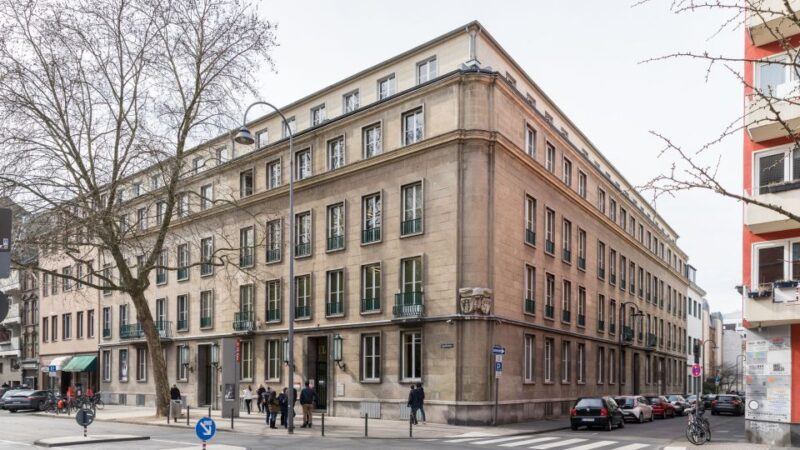
Visitors on the Cologne EL-DE Haus and WWII Jewish Holocaust History Tour can expect to visit the former Gestapo headquarters, now a memorial center, and explore Cologne’s historic Old Town.
The tour highlights the oppression of political prisoners, forced laborers, and Jewish people during the Nazi regime, as well as the devastating impact of Allied bombings that destroyed 90% of the city.
Participants will witness over 1,800 inscriptions made by prisoners in the EL-DE House’s basements, which served as prison cells and torture rooms.
Through expert commentary, the tour provides historical insights into Hitler’s rise to power and the everyday struggles of survival under the Third Reich.
Historical Context

Under the Nazi regime in the 1930s and 1940s, the city of Cologne experienced immense oppression and devastation, much of which is reflected in the history of the EL-DE House.
This former Gestapo headquarters now stands as a memorial center, serving as a poignant reminder of the atrocities committed against political prisoners, forced laborers, and Jewish people during the Third Reich.
Visitors can witness the impact of Allied bombings that destroyed 90% of Cologne and view over 1800 inscriptions made by prisoners in the EL-DE House’s basements, which were used as prison cells and torture rooms.
This tour offers a unique opportunity to gain insights into the everyday life and survival struggles of those who lived under the brutality of the Nazi regime.
Insights Into Third Reich
How did the Nazi regime rise to power and consolidate its control over Germany during the 1930s? This tour provides insights into Hitler’s ascension and the oppressive policies enacted by the Third Reich, which targeted political opponents, forced laborers, and Jewish citizens, among other groups. Visitors will learn about the Nazis’ systematic persecution and dehumanization of minority populations, as well as the significant impact of Allied bombings that destroyed 90% of Cologne. The tour also explores the everyday struggles and survival tactics employed by the city’s residents during this dark period of history.
| Policy | Impact |
|---|---|
| Political Repression | Imprisonment and execution of opponents |
| Forced Labor | Exploitation of workers from occupied territories |
| Antisemitism | Stripping of rights, deportation, and genocide of Jewish people |
| Militarization | Preparation for territorial expansion and World War II |
Everyday Life Under Nazi Rule

The Nazi regime’s oppressive policies not only targeted political dissidents and minority groups, but also profoundly impacted the daily lives of ordinary Cologne residents during the Third Reich.
Civilians faced food shortages, rationing, and strict curfews that restricted their movements. Countless families were torn apart as fathers, brothers, and sons were conscripted into the military or sent to forced labor camps.
Constant fear of the Gestapo, the Nazi secret police, permeated the city, as neighbors were encouraged to report any suspicious activities. Everyday survival became a struggle, as the population grappled with the devastating effects of Allied bombings that destroyed much of Cologne’s infrastructure and historic landmarks.
Inscriptions by Prisoners
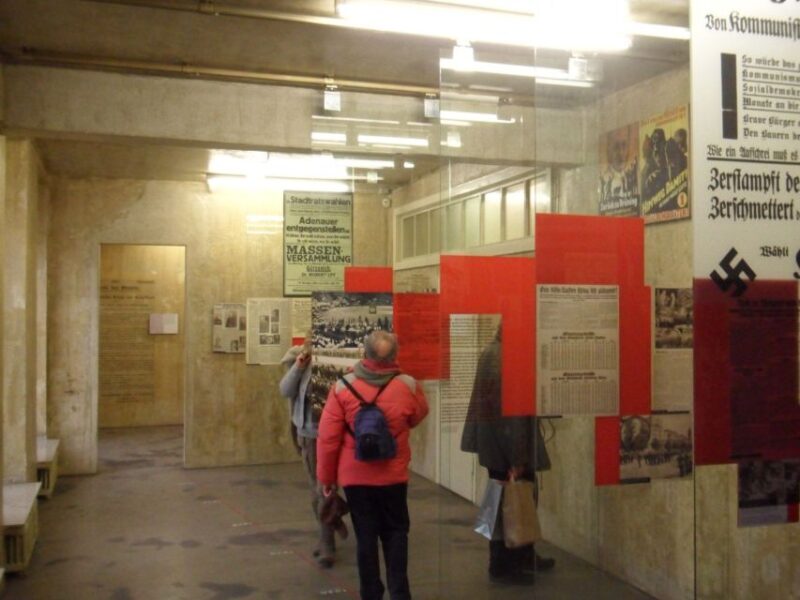
Inscribed on the basement walls of the EL-DE House, the former Gestapo headquarters, are over 1,800 haunting messages left by political prisoners and victims of the Nazi regime.
These inscriptions provide a chilling glimpse into the harrowing experiences of those who were imprisoned, tortured, and persecuted within its walls. The messages range from desperate pleas for help to expressions of resolve and resilience in the face of unimaginable suffering.
Visitors can trace the etchings, each one a testament to the human spirit’s endurance under the most brutal conditions. These powerful inscriptions serve as a sobering reminder of the lives lost and the legacy of the Nazi’s atrocities that occurred within this building.
Tour Experience Details
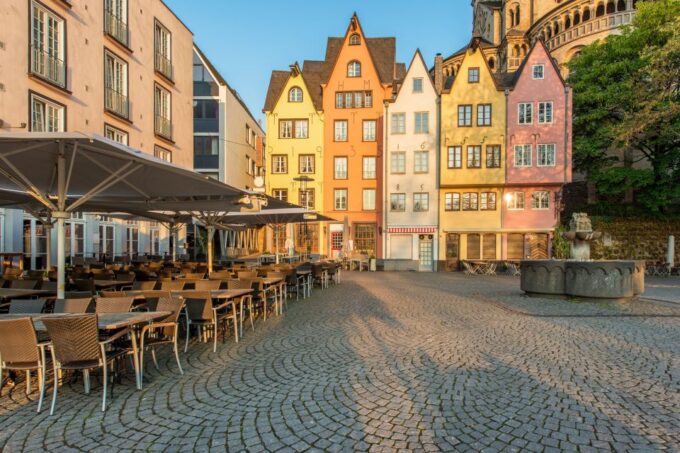
The guided walking tour of Cologne’s Old Town and EL-DE House provides visitors with a tailored experience to meet their interests and needs.
Expert commentary delves into the history of the Third Reich, WWII, and the Holocaust, offering profound insights into this dark chapter. Guests can trace the harrowing inscriptions left by political prisoners and victims, gaining a chilling glimpse into the suffering endured within the former Gestapo headquarters.
The tour also explores Cologne’s Old Town, including the Almarkt and the iconic Cologne Cathedral, while highlighting the devastating impact of Allied bombings that destroyed 90% of the city.
This immersive experience offers a powerful and poignant look into the past, fostering a deeper understanding of this complex and challenging history.
Meeting Point and Availability

According to the tour details, the meeting point for the Cologne EL-DE Haus and WWII Jewish Holocaust History Tour is in front of Cafe Extrablatt at the Old Market Square, located at Alter Markt 28-32, 50667 Köln, Germany.
Visitors can check the available starting times upon booking the tour.
The tour offers a guided walking experience through Cologne’s Old Town and the EL-DE House, providing expert commentary on the history of the Third Reich, WWII, and the Holocaust.
The tour can be tailored to meet the interests and needs of the participants, ensuring a personalized and informative experience.
Frequently Asked Questions
Can I Bring My Own Food and Drinks on the Tour?
No, travelers are generally not permitted to bring their own food and drinks on guided tours. The tour operator typically provides guidelines on what can be brought and consumed during the tour experience.
Is the Tour Wheelchair Accessible?
The tour is wheelchair accessible. Accommodations can be made for guests with limited mobility. Visitors are encouraged to notify the tour operator of any special needs when booking to ensure a comfortable and accessible experience.
Do I Need to Bring Any Special Equipment?
No special equipment is required for this tour. Participants should wear comfortable walking shoes and dress appropriately for the weather. The tour provider will ensure the experience meets the needs of all guests.
Can I Take Photographs During the Tour?
Yes, visitors are generally allowed to take photographs during the tour, though they may be asked to avoid capturing certain sensitive areas or exhibits. It’s best to check with the tour guide for any specific photography guidelines.
Is There an Option to Extend the Tour Duration?
The tour operator typically offers the option to extend the tour duration upon request. Clients can inquire about this when booking the tour or speak to the guide on the day to see if an extension is possible.
Recap
The Cologne EL-DE Haus and WWII Jewish Holocaust History Tour offers a poignant exploration of the city’s dark past under Nazi rule.
Visitors can explore the experiences of political prisoners, forced laborers, and Jewish citizens, uncovering the impact of Allied bombings and the everyday struggles faced by civilians.
The tour also highlights over 1,800 inscriptions left by prisoners, reflecting resilience amidst brutality.
You can check availability for your dates here:More Historical Tours in Cologne
- Cologne: WWII History & EL-DE Haus Private Guided Tour
- Cologne EL-DE Haus and WWII Jewish Holocaust History Tour
- Jewish Quarter History Walking Tour in Cologne’s Old Town
- Guided Tour of the Historic Center of Colonia
- Cologne: Old Town Beer History Tour
- Jewish Heritage Private Walking Tour & Visit ELDE Museum
More Tours in Cologne
More Tour Reviews in Cologne
Not for you? Here's more nearby things to do in Cologne we have reviewed
- Private German Beer Tasting Tour in Cologne Old Town
- Cologne Private Walking Tour With A Professional Guide
- Private-Group Bike Tour of Cologne with Guide
- Private photo tour in Cologne
- Explore Aachen in 60 minutes with a Local
- Cologne CGN Airpot to Köln | Bonn | Dusseldorf Private Transfer
- Cologne: City Walk with Audio Guide in 7 Languages on your Phone
- Aachen Cathedral tour with audioguide on mobile app
- Private photo tour to the most beautiful photo spots in Cologne
- Self Guided Walking Tour of Cologne: City and Cathedral
- Aachen Christmas Market Tour With A Professional Guide
- Day tour Aachen & Cologne from Brussels
